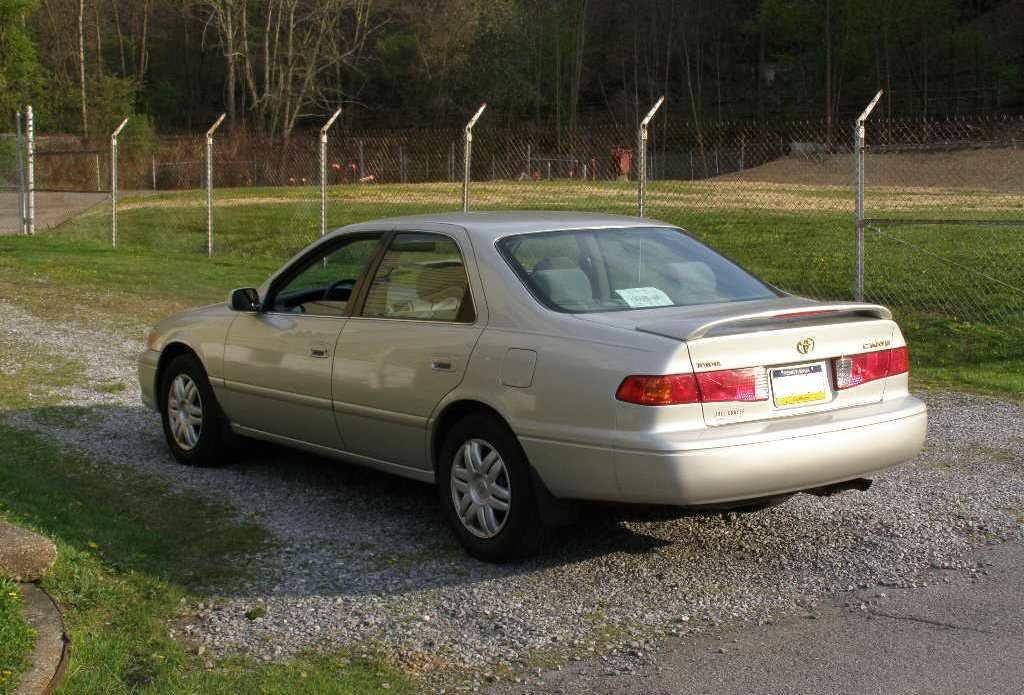Some time ago, people started talking about Monroe Techs suggesting to use 50ft-lbs torque on center/rod nut in Quick-Struts to overcome the rattle/clunking issues plaguing some of the assemblies.
some of our comments were posted under a different thread (Deeza vs OEM sway bar end links) as off topic:
http://www.toyotanation.com/forum/1...1992-1996-1997-2001/380625-old-oem-sway-bar-end-links-vs-new-deeza-links-4.html
I tried emailing Monroe/Tenneco Support 2 times using their website form here, once the Installation department, other time the Warranty department to get the proper torque value in a written statement. Never received a reply.
Finally called them (1-734-384-7809) myself choosing Warranty Issues (#2 and then waited for operator) today asking about rattling quick struts and confirming torques for example model 271679 (Solara V6 front left quick strut).
Here's what they told me.
First of all the very nice guy I spoke with said that the recommended torque on the rod nut (sometimes called a center nut here on TN) is same as OEM torque, 36ft-lbs. He said one can try overtightening it a tiny bit with no harm, but he personally would never go above a few foot-pounds higher than the specified torque or something may get broken (sounds logical to me).
I asked then, that some other people I know called this help line and they heard to use a 50ft-lbs torque to over-come the rattle issues with quick-struts.
He just said that he personally doesn't recommend that and said the reason the rattle exists might mean something else is wrong with the suspension, steering or brake parts on the car.
Well, I was persistent and said that all other stuff was checked and all is OK, while the slight rattle in upper area of Quick-Struts still exists even after re-torquing the mounts nuts (29ft-lbs) and the rod nut (36ft-lbs), also notified him that I found one being almost loose (way below 36) formerly.
Then the guy looked up this procedure in the database:
sounds interesting. How about this procedure to fix a rattling quick-strut?
Have anybody tried it or even was suggested to perform it by Monroe Techs over the phone?
I need to wait a few days until it gets warmer (working in a parking lot).
All I can say however, is that his procedure makes A LOT of sense. if the quick-strut was assembled wrong with rod nut not locked into place (and the nut torqued down) then it would explain the space between the mount vs bearing and rattle. Also if the torque on the center nut was too low from factory it maybe explain why the strut rod had popped off from locked position during shipping?
Eager to try this procedure, just don't ask me to do this with 12F real feel temperatures and wind gusts up to 30mph out there
P.S.
Sorry if a Monroe procedure I posted was already posted once, maybe I even personally commented under it somewhere else, but my memory falls short sometimes. Just trying to share information, sorry if this is a re-post.
some of our comments were posted under a different thread (Deeza vs OEM sway bar end links) as off topic:
http://www.toyotanation.com/forum/1...1992-1996-1997-2001/380625-old-oem-sway-bar-end-links-vs-new-deeza-links-4.html
I tried emailing Monroe/Tenneco Support 2 times using their website form here, once the Installation department, other time the Warranty department to get the proper torque value in a written statement. Never received a reply.
Finally called them (1-734-384-7809) myself choosing Warranty Issues (#2 and then waited for operator) today asking about rattling quick struts and confirming torques for example model 271679 (Solara V6 front left quick strut).
Here's what they told me.
First of all the very nice guy I spoke with said that the recommended torque on the rod nut (sometimes called a center nut here on TN) is same as OEM torque, 36ft-lbs. He said one can try overtightening it a tiny bit with no harm, but he personally would never go above a few foot-pounds higher than the specified torque or something may get broken (sounds logical to me).
I asked then, that some other people I know called this help line and they heard to use a 50ft-lbs torque to over-come the rattle issues with quick-struts.
He just said that he personally doesn't recommend that and said the reason the rattle exists might mean something else is wrong with the suspension, steering or brake parts on the car.
Well, I was persistent and said that all other stuff was checked and all is OK, while the slight rattle in upper area of Quick-Struts still exists even after re-torquing the mounts nuts (29ft-lbs) and the rod nut (36ft-lbs), also notified him that I found one being almost loose (way below 36) formerly.
Then the guy looked up this procedure in the database:
... and said to try this first and then if it doesn't help to call back and they will take care of it further (more procedures?) or under warranty if anything is proven wrong.
sounds interesting. How about this procedure to fix a rattling quick-strut?
Have anybody tried it or even was suggested to perform it by Monroe Techs over the phone?
I need to wait a few days until it gets warmer (working in a parking lot).
All I can say however, is that his procedure makes A LOT of sense. if the quick-strut was assembled wrong with rod nut not locked into place (and the nut torqued down) then it would explain the space between the mount vs bearing and rattle. Also if the torque on the center nut was too low from factory it maybe explain why the strut rod had popped off from locked position during shipping?
Eager to try this procedure, just don't ask me to do this with 12F real feel temperatures and wind gusts up to 30mph out there
P.S.
Sorry if a Monroe procedure I posted was already posted once, maybe I even personally commented under it somewhere else, but my memory falls short sometimes. Just trying to share information, sorry if this is a re-post.









